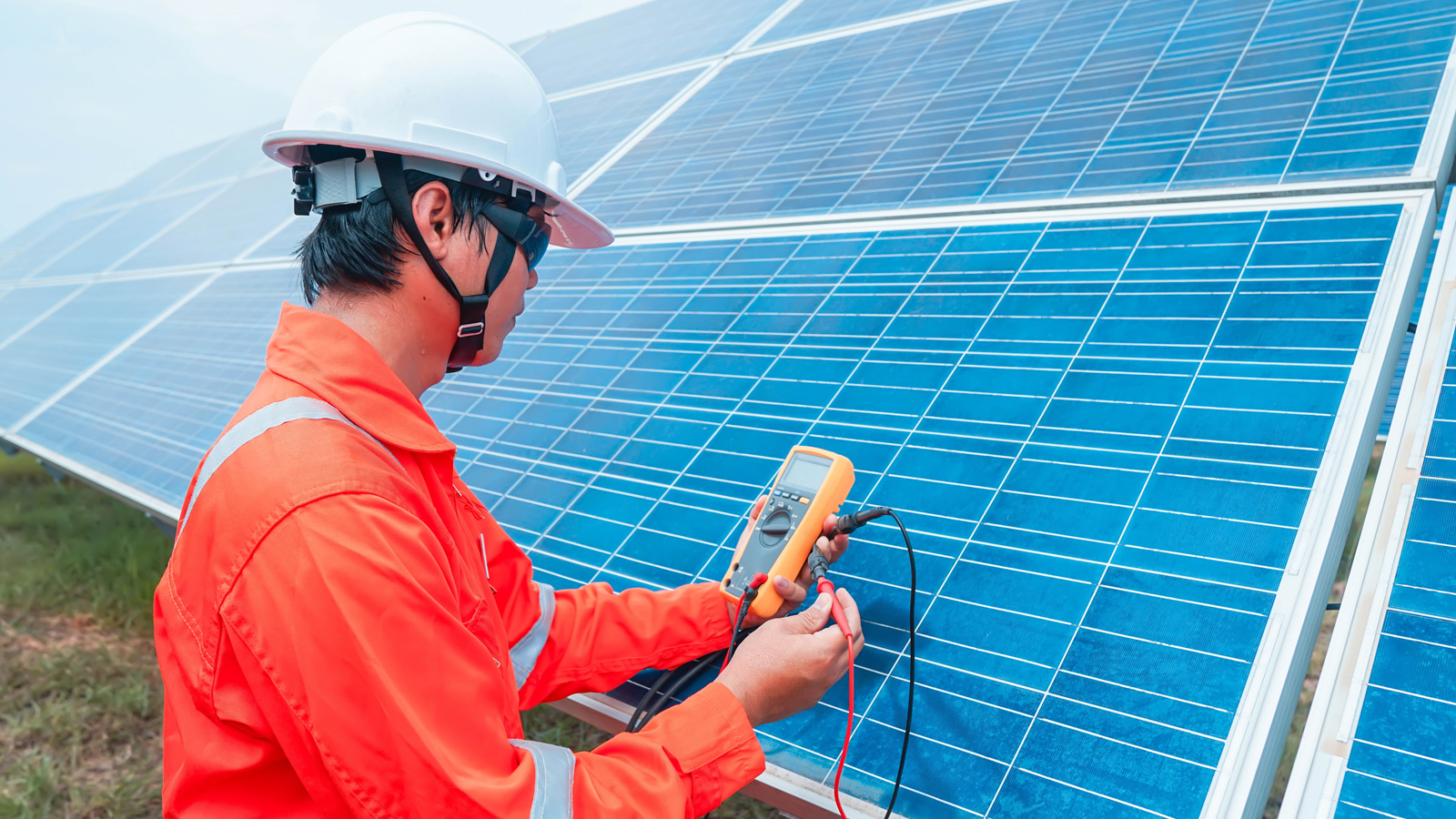The real estate edge powered by energy testing north carolina
The Role of Power Screening in Accomplishing an Airtight Solution for Your Residential property
Energy testing is important for residential or commercial property proprietors seeking to produce a closed setting. It determines air leaks and inefficiencies that can compromise power efficiency. Common wrongdoers include spaces around doors and home windows. Utilizing methods like blower door examinations and thermal imaging, property owners can obtain insights right into their property's vulnerabilities (air tight solutions). Comprehending these searchings for is essential. What steps should be taken when air leakages are recognized? The responses hold the key to improved convenience and financial savings
Understanding Power Testing and Its Value
Power screening plays an essential function in examining the airtightness of structures and structures. By determining air leak, this technique provides vital understandings into a home's power performance, thermal convenience, and overall efficiency. Airtight buildings lower power intake, guaranteeing that home heating and air conditioning systems run successfully. This screening procedure generally includes methods such as blower door examinations, which develop a controlled environment to identify unplanned air pathways.Understanding the value of power testing extends past conformity with structure codes; it promotes an aggressive approach to sustainability. Recognizing air leaks early can cause timely remediation, ultimately enhancing interior air top quality and decreasing utility prices. In addition, power testing adds to the long life of structure materials by lessening dampness build-up and associated damage. As awareness of environmental influence rises, power testing becomes a vital device for builders and home owners intending for high-performance buildings.
Common Sources of Air Leaks in Properties
Determining common resources of air leakages is important for improving a home's power performance. These leaks frequently take place in various locations of a building, significantly affecting heating and air conditioning prices. Common wrongdoers include spaces around doors and windows, where seals might deteriorate gradually. Additionally, electric outlets and switches can produce paths for air exchange if not properly protected. Attic rooms and basements are likewise frequent sources, specifically where walls meet the structure or the roofing system. Other possible leak points consist of pipes penetrations, venting systems, and the areas bordering smokeshafts. Furthermore, older residential properties may suffer from broken down structure materials, boosting susceptability to air infiltration. By recognizing these typical sources, homeowner can take positive actions to seal leaks, consequently boosting total energy effectiveness and convenience within their spaces. Dealing with these problems is an essential part of developing an impermeable solution for any building.
Methods of Energy Testing: Blower Door and Thermal Imaging
Effective power screening approaches, such as blower door examinations and thermal imaging, play a crucial duty in identifying air leakages within a home. The blower door test involves depressurizing a building or pressurizing to determine airflow and identify leakages. A calibrated follower is installed in an outside entrance, and the resulting pressure distinction highlights locations of undesirable air infiltration. This method quantifies the overall airtightness of the structure.Thermal imaging enhances blower door examinations by aesthetically identifying temperature variants on surface areas, revealing surprise air leaks. Infrared cams capture warmth loss or gain, permitting for exact identification of issue locations, such as badly protected wall surfaces or spaces around doors and windows. energy testing north carolina. Together, these techniques offer a complete assessment of a property's energy effectiveness, making it possible for residential or commercial property proprietors to deal with air leaks successfully and improve general performance
Advantages of Identifying Air Leaks
Identifying air leaks offers significant advantages for power efficiency and indoor comfort. By securing these leaks, structures can reduce power usage, leading to lower energy bills and a minimized carbon footprint. In addition, enhanced airtightness adds to an extra stable indoor setting, improving general convenience for occupants.
Power Efficiency Improvements
Detecting air leaks is necessary for enhancing energy effectiveness in structures. Recognizing these leaks enables residential or commercial property proprietors to resolve areas where conditioned air leaves or unconditioned air goes into, bring about considerable energy cost savings. By securing splits and voids, buildings can keep a constant temperature, minimizing the need on home heating and cooling down systems. This not only lowers energy bills however likewise decreases the environmental impact connected with increased power intake. In addition, power efficiency enhancements add to a building's total sustainability, making it a much more appealing choice for eco-conscious purchasers or renters. Inevitably, prioritizing air leak detection and removal aids maximize power usage, promotes accountable source monitoring, and sustains long-lasting economic benefits for property proprietors.

Enhanced Indoor Comfort
Addressing air leakages not only causes click here for info power savings but likewise considerably boosts indoor convenience. When air leaks are properly recognized and sealed, temperature level policy within a property ends up being a lot more reliable. This causes consistent indoor temperatures, eliminating cold drafts in wintertime and locations in summer season. Enhanced insulation additionally reduces sound air pollution from outdoors, developing a quieter and even more peaceful living environment. Furthermore, enhanced air high quality is accomplished by lessening the seepage of outside contaminants, allergens, and moisture, contributing to the general well-being of owners. Consequently, home owners experience an even more enjoyable environment, cultivating relaxation and productivity. Eventually, identifying and remedying air leakages is crucial for accomplishing suitable indoor comfort throughout the year.
How Energy Screening Improves Convenience and Indoor Air High Quality
Energy screening plays an important duty in improving temperature law within indoor spaces, guaranteeing a comfortable and constant environment. By sealing and determining air leaks, it likewise significantly minimizes the infiltration of contaminants, thereby enhancing indoor air quality. This double influence promotes total well-being for passengers.
Enhanced Temperature Level Law
Effective temperature level policy significantly adds to both comfort and indoor air top quality, making it an important focus for contemporary building layout. Energy testing plays a vital role in accomplishing this regulation by determining locations where heat loss or gain happens, enabling targeted renovations. By guaranteeing a closed structure envelope, power testing assists maintain constant indoor temperatures, decreasing the requirement for too much home heating or cooling. This stability boosts owner comfort, as fluctuations in temperature can result in discomfort and frustration. In addition, effective temperature control can improve indoor air high quality by lowering the threat of condensation and mold and mildew development, which prosper in irregular temperature conditions. For that reason, energy screening is essential for optimizing temperature management in industrial and household homes.
Lowered Toxin Infiltration
While many factors contribute to indoor air quality, lowered pollutant infiltration attracts attention as a crucial element that energy screening can greatly boost. Energy testing recognizes air leaks and weak points in a building's envelope, which might permit outside contaminants, irritants, and wetness to get in interior spaces. By securing these leakages, properties can successfully restrict air-borne pollutants, causing a healthier atmosphere. Enhanced airtightness not just improves convenience but additionally lessens the burden on home heating and cooling systems, leading to energy savings. In addition, reduced toxin seepage promotes better total health for passengers, as cleaner air promotes respiratory system wellness and decreases allergy signs. Energy testing plays a critical duty in developing both an energy-efficient and health-conscious living area.
The Financial Impact of Power Screening on Energy Bills

Steps to Take After Power Screening Results
Once energy screening results remain in, house owners ought to carefully examine the searchings for to establish one of the most reliable path onward. The very first step involves identifying the areas that call for improvement, such as air leakages or insulation shortages. Property owners ought to then focus on fixings based upon the extent of the issues and their prospective influence on power efficiency.Next, it is suggested to seek advice from with Visit Website professionals that specialize in power performance to design a comprehensive action strategy. This might include services like sealing voids, including insulation, or updating home windows and doors.After executing the required changes, a follow-up power examination can establish the efficiency of the repair work. Continuous surveillance is likewise vital to ensure that the building preserves its airtight standing gradually. By complying with these steps, home owners can considerably improve their residential or commercial property's energy performance, leading to lowered utility costs and improved comfort.
Often Asked Concerns
How Frequently Should I Conduct Power Evaluating on My Home?
The regularity of power testing must generally be every couple of years, or following substantial restorations. Normal evaluations aid determine efficiency improvements and ensure that the residential or commercial property keeps perfect power efficiency in time, adjusting to transforming conditions.
Is Energy Screening Necessary for New Constructions?
Energy screening is important for brand-new building and constructions, as it identifies possible air leak and insulation concerns - energy testing south carolina. Applying these tests assurances energy performance, improves interior convenience, and meets structure codes, inevitably causing lasting cost savings
Can I Perform Energy Testing Myself?
Energy testing usually calls for specialized devices and proficiency. While some property owners might attempt fundamental evaluations, professional services assure accurate outcomes and visit their website effective identification of concerns, eventually causing better power performance and convenience in living areas.
What Is the Expense of Specialist Power Testing Services?
The cost of professional energy testing solutions commonly varies from $300 to $1,500, relying on property dimension, place, and complexity. House owners must think about potential power cost savings when examining the investment in these services.
How Much Time Do Power Testing Outcomes Normally Last?
Energy screening results usually stay valid for one to three years, relying on elements like structure alterations and environmental adjustments. Regular updates are advised to assure precision and maintain reliable energy effectiveness standards. Effective power testing techniques, such as blower door examinations and thermal imaging, play a necessary role in identifying air leaks within a residential property. Recognizing these leakages permits building owners to address locations where conditioned air runs away or unconditioned air enters, leading to significant power savings. Energy testing determines air leakages and weak points in a building's envelope, which might permit exterior pollutants, allergens, and moisture to enter indoor rooms. As property owners significantly seek to reduce their power expenditures, the role of power screening becomes necessary in recognizing inefficiencies and leakages. Homeowners should then prioritize repair services based on the intensity of the concerns and their possible influence on power efficiency.Next, it is suggested to seek advice from with specialists that specialize in power performance to design a comprehensive activity strategy.